Lands of the Mesozoic Review | Tableau Builder with Dinosaurs
Build a prehistoric ecosystem with this familiar yet unique tableau builder.
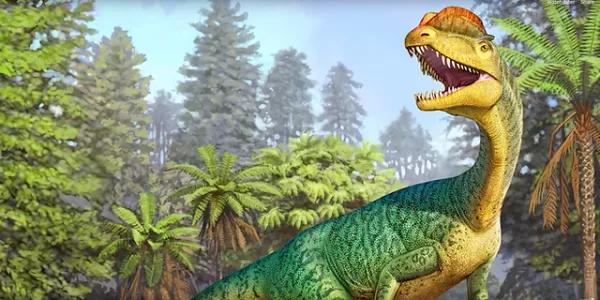
Introduction
Published by Pungo Games, a subsidiary of Worthington Games, Lands of the Mesozoic is its first game offering. The publisher is known for its accessible, easy to play wargames, and it was intriguing to see them venture into the wider eurogame market.
Wingspan and other tableau builders have proven to be vastly popular. In fact, Wingspan was voted the Number 1 game in a Filipino boardgame Facebook group. So when I heard there was a Wingspan-like tableau builder based on dinosaurs, I couldn’t wait to try it!
What’s in the Box
The game includes 4 mounted player mats. Each mat contains card spaces for Land, Herbivore and Carnivore cards; aside from an Extinction Pile space. Lands of the Mesozoic (LOTM) is a card based game where the cards are the resources, engine, and Victory Points themselves. The box also includes 55 Land cards, 63 Herbivore cards, 42 Carnivore cards, 18 Period and 9 Extinction cards, 15 Goal cards, a rulebook and playbook, numerous tokens and a card tray. Boards are mounted and cards are made from thick card stock. Tokens are not wooden, but game components have a good quality feel to them.
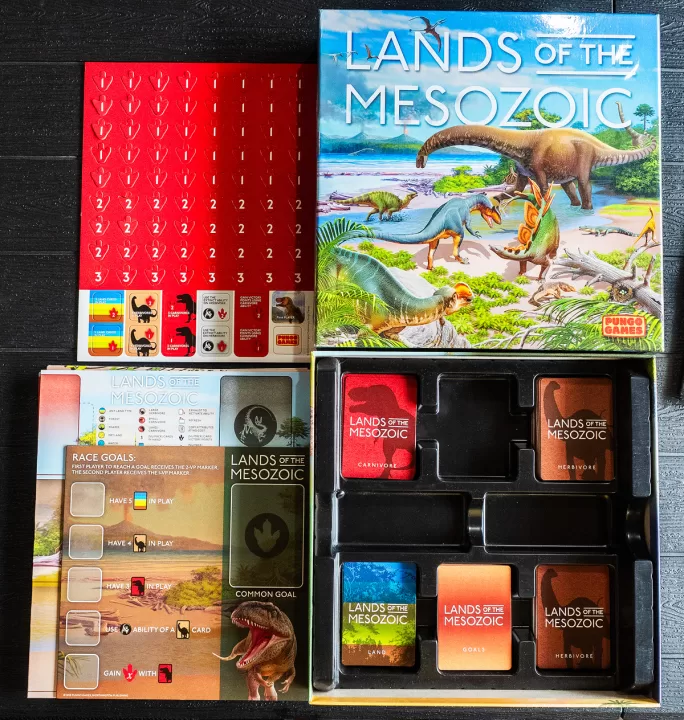
The box and it’s inclusions
Each Herbivore and Carnivore card is unique and is illustrated by award winning Ukranian Paleoartist Sergei Krasovskiy. These prehistoric animals are meticulously researched by game designer Ander Guinea, who is himself a professor of Geology based in Australia. But as Anders likes to point out, the game includes a myriad of prehistoric creatures from the Triassic to the Cretaceous eras, many of which are not dinosaurs themselves; and many of which may be unfamiliar to the casual dinosaur fan. The excellent playbook gives a short discussion of the Mesozoic era and a description of each animal card.
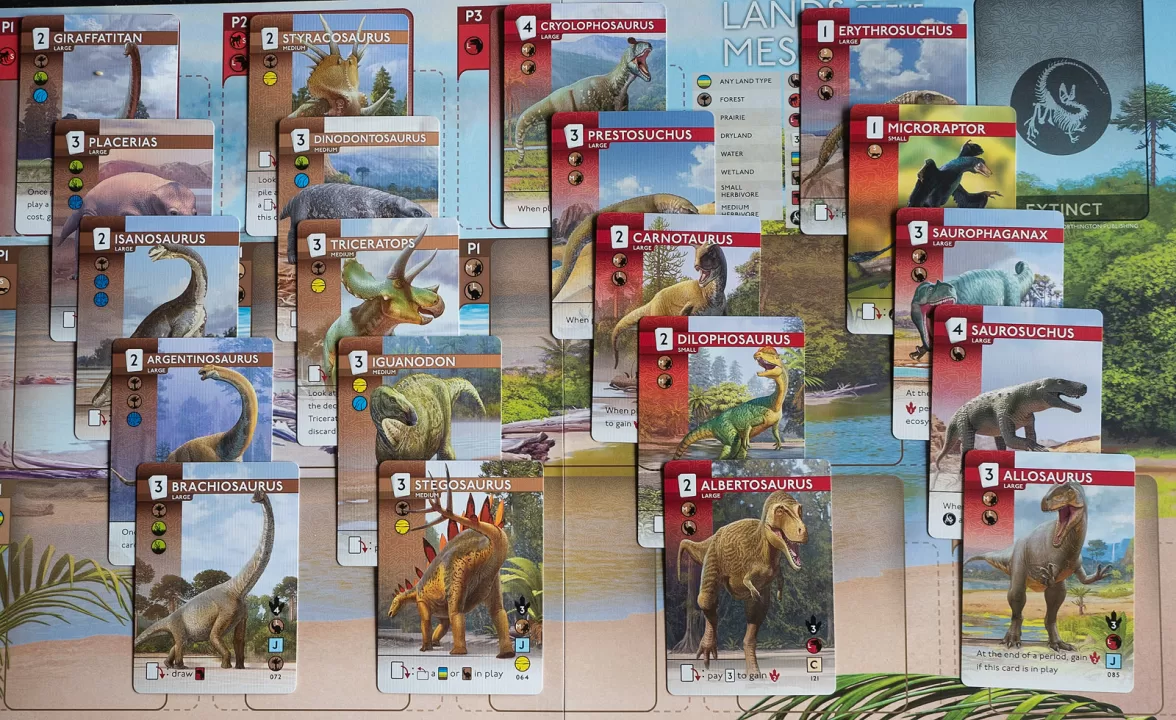
The card art is superb
Building a Prehistoric Biome
In a game of LOTM, each player receives a player mat and a starting hand of cards. Each round starts by flipping a period card that has certain game effects, such as drawing more cards for each player. In turn order, players get to choose from 4 options: play a card, activate 1 or 2 cards in play, use the special action once per round, or pass.
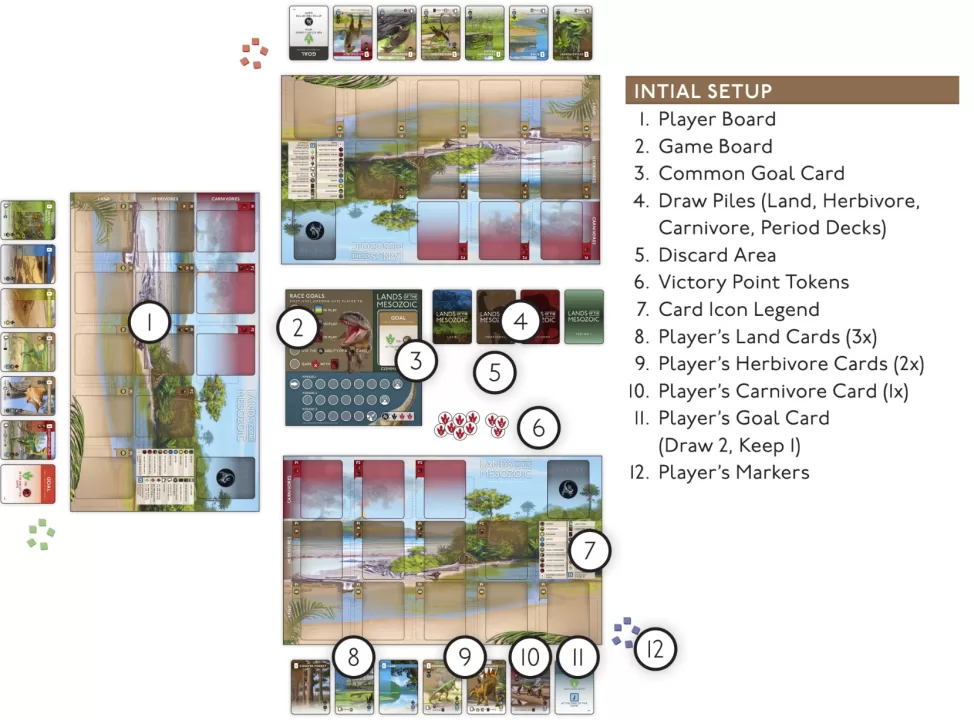
A 3-player game setup
To play a card, the player has to meet the requirements on the upper left of the card that’s intended to be played. The most basic requirement is to discard cards to play a card. Land cards only need the required cards to be discarded(from your hand) in order to be played. Other cards such as Herbivores, require land icons from unexhausted Land cards within the tableau to play. So, aside from discarding the required cards, a player also needs to exhaust the requisite land icons in the tableau to play the Herbivore card. Carnivores require certain types of Herbivore (and sometimes Carnivore) icons to play aside from the card discards. All cards enter play exhausted, ie its abilities and icons are unavailable for use (until the next round) and it is flipped sideways to signify its exhausted status.
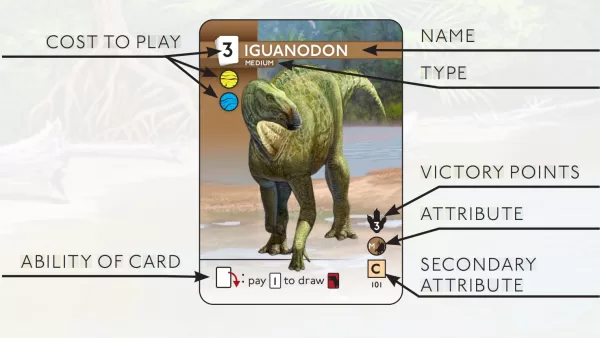
Anatomy of a card
Most cards have abilities that can only be used in their active state (not exhausted). Generally speaking, Land card abilities allow for more cards to be drawn, Herbivores usually have an Extinction ability, and Carnivores have Victory Point generation abilities. Once an ability is used, the card becomes exhausted.
Once per round, players can also use the Special Action. By discarding 2 cards from their hand, players can draw Land, Herbivore or Carnivore cards from the deck of discard pile; or may Extinct any card in play, aka within the tableau. Extinct cards are set aside in the Extinction pile and only cards that go Extinct can score their printed VP’s at the end of the game.
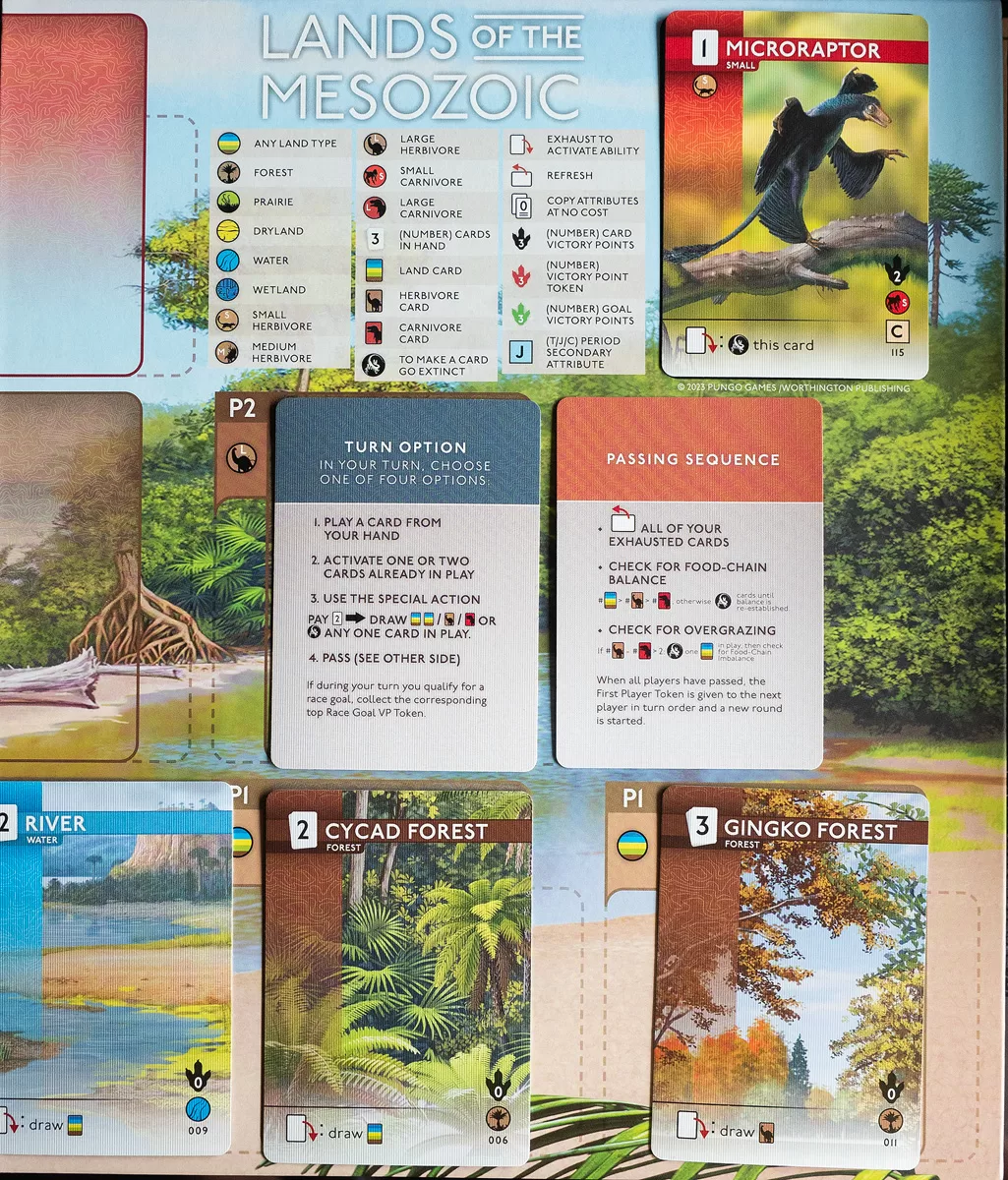
The game’s player aids provide useful reminders and explanations
Play continues from player to player and once a player runs out of cards or actions to play, he/she Passes. All Exhausted cards in the tableau are flipped back to their active side. The player checks for Food Chain Imbalance and Overgrazing, making sure his/her biome is sustainable and balanced. The player must Extinct cards from the tableau until this balance is achieved. Once all players have passed, the next round begins by flipping the next Period Card. When there are no more Period Cards, the game ends, and all cards in the tableau are added to the Extinction Pile (of each player). Victory Points (VP’s) are tallied and the player with the highest score wins!
This is, of course, a very summarized view of play. Check out this kickstarter video which teaches the game in full. Do note that certain aspects of the game (such as turn order actions) have been changed from the kickstarter video.
A Tableau Builder-Rebuilder
At first glance, LOTM looks very similar to Wingspan with its player board and tableau layout. But the Extinction mechanic makes it quite unique amongst tableau builders. Much like the “entombed” and “promote” mechanic of Valley of the Kings: Afterlife and Tyrants of the Underdark, the game presents players with an interesting conundrum – do I continue using my engine or should I destroy it and rebuild it for end game VP’s? It’s an interesting hook, which I have never seen adapted on tableau builders (Valley of the Kings and Tyrants of the Underdark are both deckbuilders). However, the Extinction mechanic in LOTM is less punishing than the aforementioned games, since at games end, all cards left on the tableau are automatically Extinct and will count for their VP’s. Also, just like those two games, Lands of the Mesozoic does not have a Victory Point track and its quite difficult to calculate player scores during the game. I like this mechanism where players are unaware of the actual score during play as it dilutes the stress of competitive scoring and players just focus on playing their best.
Special Actions reminds me of the Standard Projects of Terraforming Mars. If you are stuck with little or no choice, you can use these actions to provide you with more resources or options. It’s a good mechanic that ensures that players will always have some options during their turns.
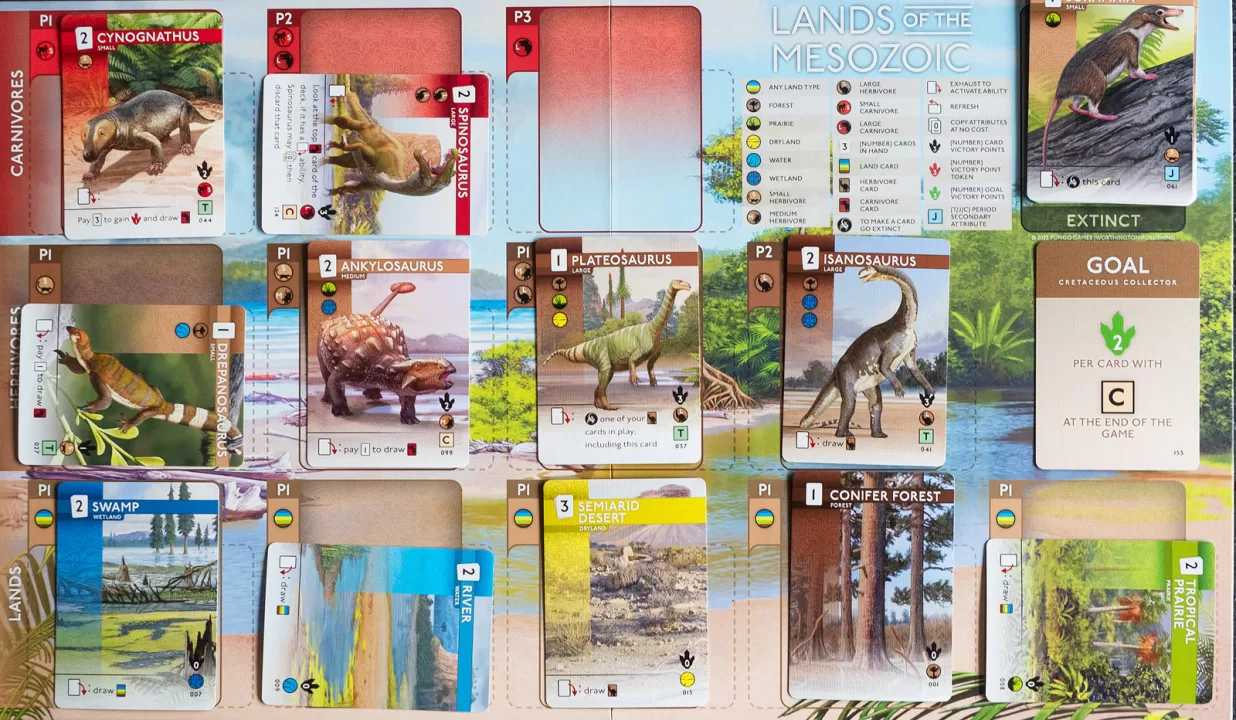
Building a better biome
Because it plays different, Lands of the Mesozoic offers a unique game experience, even for gamers who have many tableau building games in their collection. It is however a light-medium game. You will not be building an intricate engine with numerous synergies. And as Ander said in our Skype discussion, this was never the objective of the game. You will be building an engine, use it as much as you can, extinct certain cards for end game VP’s and rebuild again; and do the process over the game length. The rules are easy enough for 12 year olds to pick up; and LOTM could make a good introduction to the tableau builder genre.
A Very Worthy First Effort
Most dinosaur boardgames are either fighting games or (Jurassic) park builders. Lands of the Mesozoic is, to my knowledge, the first game of prehistoric creatures about ecological balance. As such, it could provide some educational value.
LOTM plays mostly as a multiplayer solitaire experience. You are responsible for your own biome and other players’ actions have little to no effect on yours. Because of this, it also provides a more relaxed play experience much like Lets go to Japan or Forrest Shuffle. But because it has different Goals and card draws every game, it plays very non-linear.
The game also comes with a Solo Mode where the player tries to score as many points as he or she can. I do wish the solo mode was more fleshed out though rather than just scoring more each game.
My caveat with the game is that it can play quite long (3+ hours) for a light-medium boardgame at a 4-player count. And although the game comes with a vast amount of unique cards, I sometimes wish there was even more variety of cards and more interaction among them. But the designer did mention that an expansion could be on the way soon. Nonetheless, it is a game that the casual and enthusiast gamer can enjoy at its present state.
It’s too bad that Worthington Publishing isn’t as well known outside of wargaming. It is a great first game effort from their Pungo Games subsidiary and designer Anger Guinea. I feel this game could be a sleeper hit if more people just new about it.
Review Score: 8/10

